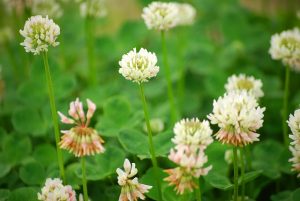 As a Rule of thumb, grass is always a good choice to plant over your septic system.
As a Rule of thumb, grass is always a good choice to plant over your septic system.
Here are some choices to steer clear of:
Avoid thirsty plants that set deep roots. It’s best to keep a distance for water-loving trees that include willows, birch, silver maple, elm, beech, walnut and linden. Avoid planting aggressive, dense ground covers that will interfere with the evaporation process, including pachysandra, cotoneaster and periwinkle. Other plants to avoid for their aggressive roots are vines, wisteria, bittersweet, morning glory, campsis and hops.
Here is a general list of plants to avoid near the septic system:
- Bamboo (any variety)
- Any trees with particularly strong lateral root growth
- Water-loving, large-scale pond grasses
- Native clematis (self seeding)
- Cedars (except genetic dwarfs)
- Woody vines
Prairie grasses and meadows are often unwise choices for the septic field. “Prairie grasses and perennials have some of the longest, tangliest, toughest roots around. The drought-resistant nature of prairie grasses translates to aggressive roots adept at seeking out water sources like perforated drainpipes.
Cedar trees and shrubs — evergreens perfect for many screening situations — are a favorite of homeowners, but they are also a no-no.
In general, it’s better to choose trees with vertical root growth if you want to plant near the septic field. When homeowners insist on planting trees with strong lateral root growth, tell them to back off.
“The rule of thumb is to keep a distance equal to the anticipated height of the tree at its maturity, plus 20 percent. Thus, a tree 30 feet tall at maturity should be kept 36 feet away from your septic field.
Those who want landscape-intensive yards also have to be warned not to plant vegetables over the septic field. Nielsen said some clients insist the drainfield, with its nutrient-laden effluent dispersal, makes a perfect spot for vegetables. But she warns them that disturbing the soil with these annual crops is bad for the septic system, and the effluent could transmit pathogens to the edibl
GO AHEAD AND PLANT THESE
While traditional lawns are acceptable over septic systems, Nielsen says many homeowners are moving away from that maintenance-heavy chemical input and water-intense ground cover. She points to a few grass varieties that are generally better than others. Safer choices may include:
- Pre-mixed eco-grass with fescues
- Small grasses, including tufted fescues, feather grass, pennisetum, deschampsia
- Grass-like choices, including mondo grass, liatris, liriope, armeria
Lawns are not very ecologically friendly. They don’t make good habitat for most things, but we still have children and dogs and they provide great places to run around on.
Rather than traditional lawns, drought-tolerant plants with short, fibrous root systems chosen for hardiness in your climate and in sun and shade conditions as required are recommended. Top choices includes microclover/ecograss/carex pensylvanica dwarf, introduction of white clover, carpets (thyme, sedums, low-growing ground covers), shallow, short/soft rooted perennials, bulb/corm/rhizome/tubers in lawns, and moss.
Microclover, she says, is the “weed we used to eradicate in our lawns,’’ and that the “old enemy is now your best friend.’’ It’s low- or no-mow and deer and bees love it.
Other good choices to add landscape interest without placing a septic system at risk are interspersing annuals or bulbs in the ground cover, Nielsen says. Those include hardy cyclamen, crocus, narcissus/daffodils, snowdrop, alliums and anemones. And newer dwarf tree and shrub varieties are also not the same threat as their bigger siblings. They include cedars, cherry, crabapples, dogwoods, cotinus, cercis, snowbell, acer palmatum, acer grisem and acer amur. Shrubs with fibrous root systems include boxwood, potentilla, daphne, choisya, hebe and euonymous.
Visit www.allclearseptic.com or call 508-763-4431 for all your questions involving septic systems and septic maintenance.

